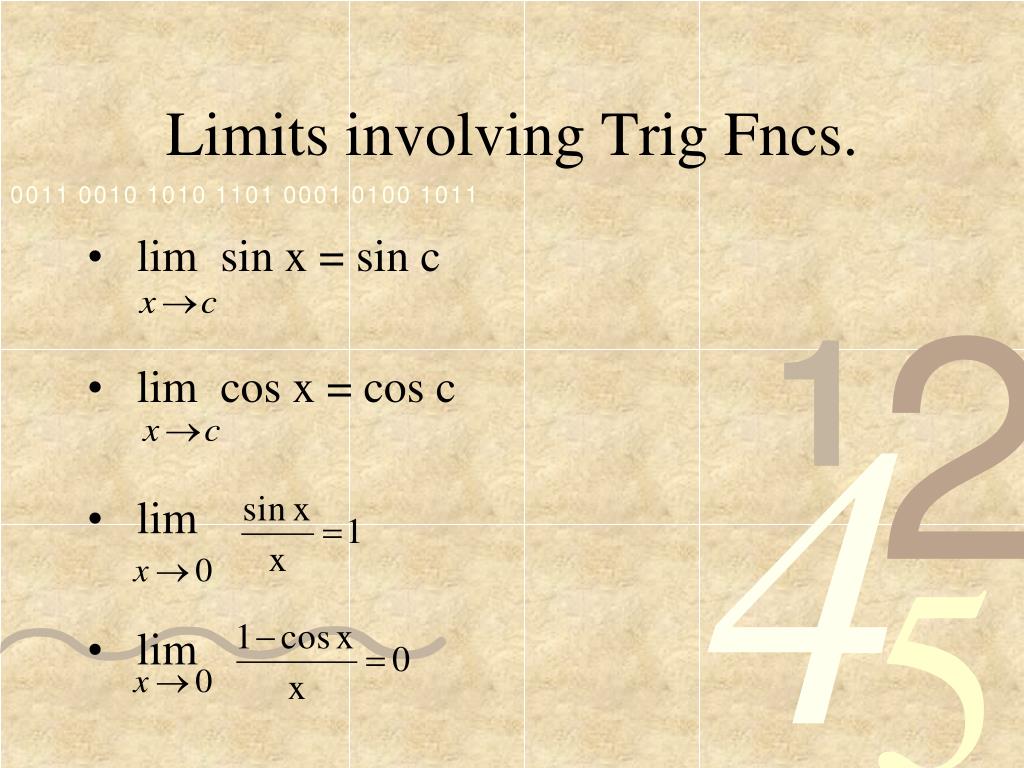Practice your math skills and learn step by step with our math solver. Because if f (x) is an infinitely small function and g (x) is a.
6.1.3 Limits Of Trigonometric Functions
The limit of 1 x as x approaches infinity is 0.
Cos infinity limit. Thus, the limit cannot exist in the reals. If you consider just the real line, both sine and cosine oscillate infinitely many times as you go to infinity. I have worked out the limit as x tends towards +infinity for cos (1/x) to be 1, as cos (1/infinity) would be cos (0) which is.
3) because cos x is periodical, it has not infinity limit. Tour start here for a quick overview of the site help center detailed answers to any questions you might have meta discuss the workings and policies of this site The real limit of a function f (x), if it exists, as x → ∞ is reached.
Lim x→∞ ( 1 x) = 0. I can come up only with this argument: Because cot x = cos x /sin x, you find the numerator approaches 1 and the denominator approaches 0 through positive values because we are approaching 0 in the first quadrant;.
The complex limit cannot exist if. How to find the limit of cos(x) as x approaches infinity #shortsif you enjoyed this video please consider liking, sharing, and subscribing.udemy courses via. The c o s ( x) can be any number if x is very large.
Lim_(xrarroo)f(x) = l if and only if for every positived epsilon, there is an m that satisfies: If x >1ln (x) > 0, the. While there is no limit of either sine or cosine at the infinity it’s important to remember that sine and cosine are bounded.
If this limits exists, we say that the function f f. It is only as good as the person who programed it. This website uses cookies to ensure you get the best experience.
Limit as x tends towards +infinity for cos (1/x) to be 1. When you see limit, think. The limit as x approaches infinity of ln (x) is +∞.
By using this website, you agree to our cookie policy. Because your calculator is a dumb machine. Precalculus limits limits involving infinity 1 answer zor shekhtman jul 14, 2015 there is no limit.
What is the limit as x approaches the infinity of ln (x)? Calculus evaluate the limit limit as x approaches infinity of cos (1/x) lim x→∞ cos( 1 x) lim x → ∞ cos ( 1 x) move the limit inside the trig function because cosine is continuous. The limit of this natural log can be proved by reductio ad absurdum.
As x approaches infinity, then 1 x approaches 0. Limits at infinity and horizontal asymptotes recall that lim x→a f (x) =l lim x → a f ( x) = l means f (x) f ( x) becomes arbitrarily close to l l as long as x x is sufficiently close to a a. In general, we write lim x→∞f(x)= l lim x → ∞ f ( x) = l if f(x) f ( x) can be made arbitrarily close to l l by taking x x large enough.
And write it like this:

Ppt - Limits Powerpoint Presentation, Free Download - Id:1438392
